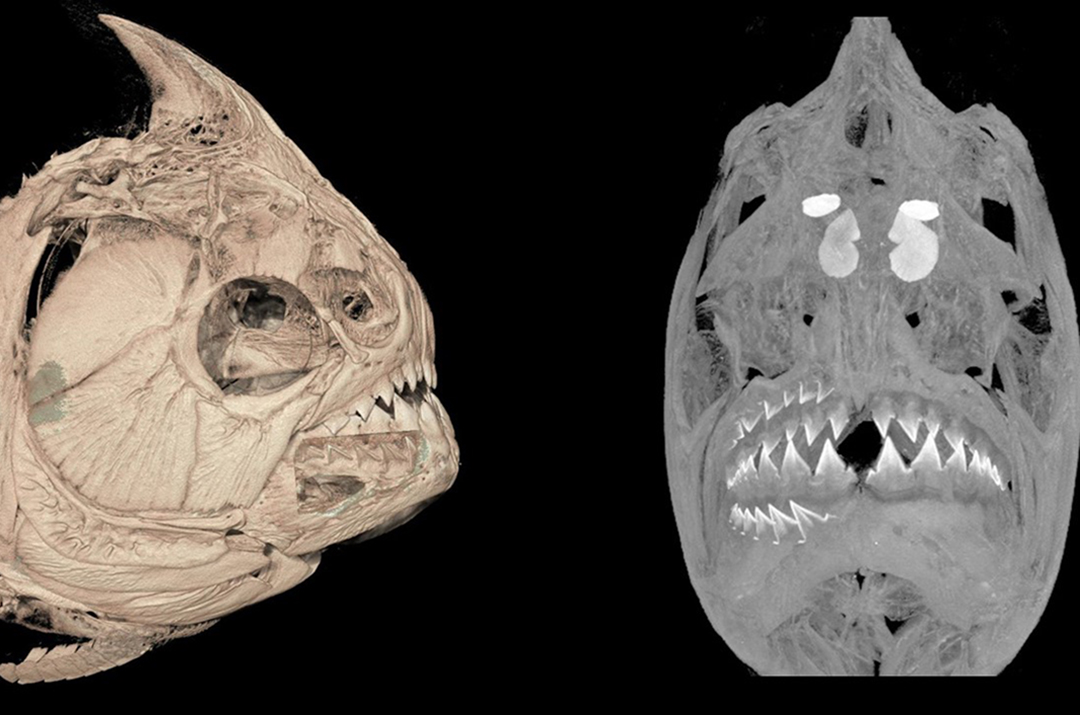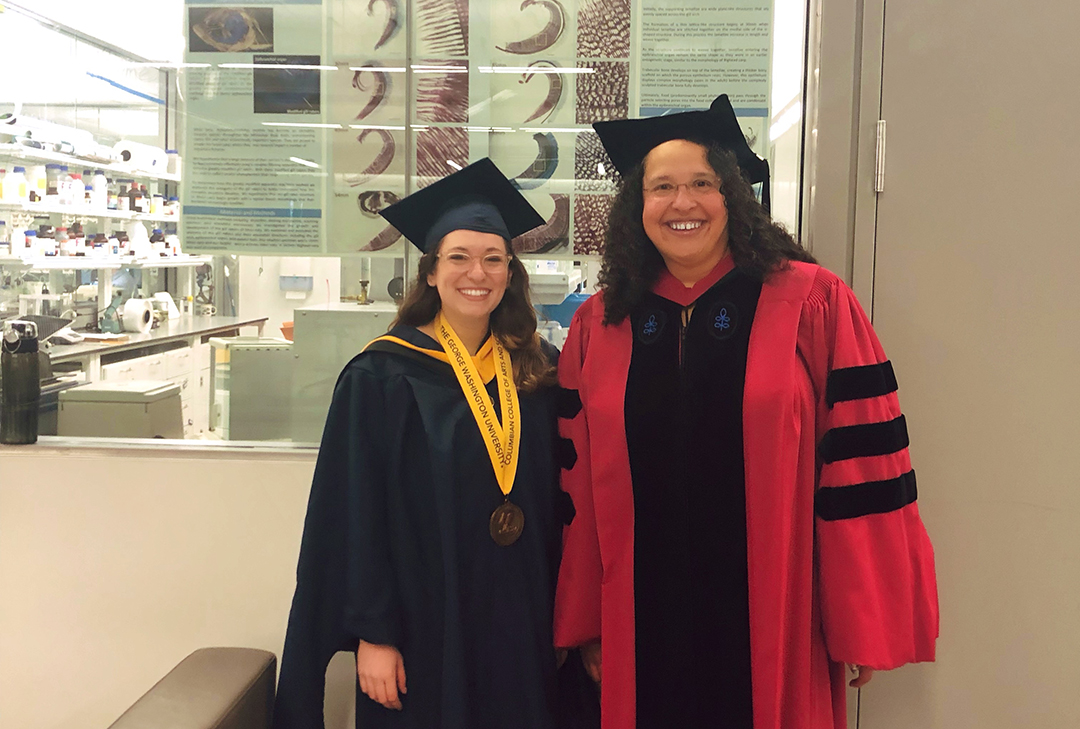By Kristen Mitchell
Piranhas and their herbivorous cousins pacus have distinctive teeth used to tear through tough food. A recent paper by Matthew Kolmann, a postdoctoral fellow in the Columbian College of Arts and Sciences Department of Biological Sciences, suggests that how these fish lose their teeth—all at once on one side of their head—be considered a characteristic of the piranha’s family, Serrasalmidae.
Dr. Kolmann completed this research in the lab of Professor L. Patricia Hernandez. He spoke to GW Today about the paper and how his findings on unilateral tooth replacement change our understanding of these fish species.
Q: What inspired you to study how piranhas and their closest relatives replace their teeth?
A: Two, separate serendipitous events. Several years ago, I was collecting fish in Guyana for my doctoral work and during some bad weather, I was laid up with a fever in camp. All day I had been watching freshwater fish eat seeds in the river. Seeds are difficult to eat, and animals like Darwin’s finches evolved differently shaped beaks to consume different-sized seeds. How did fish do this? As soon as I started to think of seed-eating fish, I thought of pacus: the herbivorous cousins of piranhas. Pacus are primary aquatic seed dispersers in South American rainforests. What this means is that some Amazonian plants rely on pacus to eat their fruits, transport seeds elsewhere, then well, pass the seeds. Researchers have found that some of these seeds need that digestion to germinate properly, which means these fish are vital to the health of the forest.
Fast forward a few years to when I began incorporating more and more CT scanning into my research. I was digitally dissecting the skulls of piranhas, and I kept seeing replacement teeth developing within the jaw bones—but only on one side. I remembered reading that piranhas replaced their teeth like this, but how their cousins, the pacus, replaced their teeth was unknown. So, I started scanning pacus, and it became obvious very quickly that it was the same as piranhas.
Q: How do your findings change our understanding of this family of fish?
A: We found that this manner of tooth replacement is shared by almost every lineage in the family, meaning that it’s like a hallmark for the group. This makes it easier for us to confidently identify fossils we might find that look like piranhas, for example, or if I find a new species in my trips to South America—finding tooth replacement like this might suggest we have a new piranha or pacu species on hand, rather than a more distant relative. But most interesting to me was figuring out how or why this kind of tooth replacement evolved—what is its function. Take humans for instance: we replace our teeth once during our life, so our adult teeth must last a very long time. Conversely, shark teeth are built tough, but are replaced every several weeks, and sometimes in whole rows like piranhas. Why?
Q: What is the evolutionary benefit to piranhas and their relatives of replacing one side of their teeth at a time?
A: The scientists who originally described this phenomenon proposed that it is adapted for gouging chunks of flesh from prey. If you’re eating steak all the time, it would make sense to always have a nice set of sharpened steak knives at the ready. Replacing your teeth as a unit makes it so you always have a set of finely-sharpened blades ready if dinner swims past. Moreover, large piranhas will use their teeth like saws. They’ll bite into prey, but then they’ll thrash from side-to-side and tear away a large piece of meat. In piranhas, neighboring teeth lock together so the teeth literally form a continuous saw-like cutting surface.
With the hundreds of specimens we CT scanned or dissected, we never saw a pacu or piranha that didn’t have a new set of teeth developing. This means that if the active teeth looked like they would be shed soon, replacement teeth were always at the ready.
Q: Your research concludes that this type of dental replacement predates piranhas eating a meat diet. Why is this significant?
A: If this unilateral tooth replacement pattern predates eating meat, then what did it evolve for? We argue that shearing through tough grasses or chewing through the husks of seeds or rinds of fruit also requires some pretty sharp teeth. Pacus, the herbivorous cousins of piranhas, eat a diverse array of plant matter including fruits, seeds, nuts, leaves and flowers. Plant matter is difficult to digest and doesn’t provide as much energy as meat, pound for pound, so it must be physically broken down for the gut to have a fighting chance at digestion. Pacu mouths are full of human-like teeth, teeth that resemble incisors, molars, etc., and each tooth appears to have its own job—like workers along an assembly line. We think that pacus replace teeth as a unit to ensure that if one tooth gets too worn or damaged, it doesn’t stop the plant-eating assembly line.
As it turned out, this same strategy worked pretty well when applied to eating meat, too. Biologists call this phenomenon exaptation, where an established trait gains a new function. Feathers, for example, existed long before powered flight, but were co-opted to help form the wings of birds.
Q: What new research questions are you planning to explore based on the conclusions of this study?
A: We’re diving deeper into understanding the genetic relationships among pacu and piranha species, i.e., who’s related to whom. I’m also CT scanning most every species in the family, so we’ve made a sort of digital library for the anatomy of these fish. I’m particularly interested in how the teeth, skulls and jaws of pacus and piranhas are shaped by what they eat. How do prey materials like seed husk predict what tooth shape might look like in a seed-eating predator? How can evolution act to shape a carnivore from a herbivore? It turns out that, at least for piranhas and pacus, it might not be that big of a change. The same anatomy with very little change can produce dramatically different feeding modes. Essentially, we want to see if there are common solutions for how adaptation solves certain problems.




